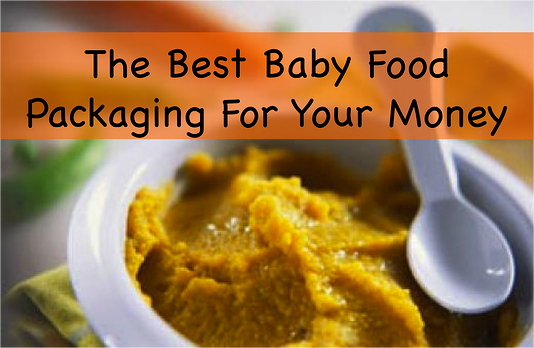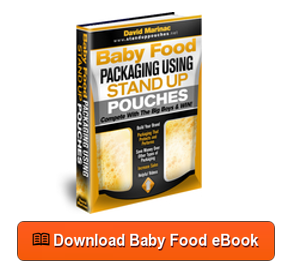You're reading this so there's probably not much we need to tell you about baby food. Which is good, because we're not in the baby food business. We are, however, in the packaging business, so there are a few things we can tell you about baby food packaging. Such as? Such as not all baby food packaging is the same. Such as some types are more convenient to use than others. The right choice can actually increase your sales by enhancing the reputation of your brand. And that's not even a full list. So here are some things we think you should know to better enable you to choose the best baby food packaging for the money.

Of course, all baby food packaging must be safe. It should, based on the characteristics of the particular food product, protect contents from vapor, odor, moisture, UV light, extra air and, of course, pets! Because we have stringent food safety regulations in the United States, consumers pretty much take for granted that the containers in which food is sold in this country are safe. And they are. For the most part. Until they're not. Like, for example, when baby food is sold in the little glass jars to which generations of parents have grown accustomed. Sure they're suitable as packaging and safe, safe, that is, until they break. And they do break. At which point they actually constitute a risk of injury, something best avoided when babies are involved.
Let's move on to another function of packaging that varies from one container type to another: Shelf life. If your packaging choice does not preserve your brand's freshness, flavor, or nutritional properties, it's not doing a good job and your customer will soon notice. As you well know, customer satisfaction is the key to success and, when it comes to food products, nothing dissatisfies a customer more than a purchase that has rotted or otherwise spoiled in the container. Most glass jars and other types of packaging do an adequate job of preserving shelf life. However, once the package is opened, things become problematic. Can the container be re-closed? Can it securely store the contents? What if, for example, the lid of a jar isn't screwed or snapped on correctly? Now you don't have a tight seal and the food will almost certainly go bad. Which is no good.
Flexible barrier bags for baby food, however, help prevent this outcome. Made from multiple layers of scientifically-formulated, FDA-approved and food grade film, packaging like stand up pouches, flat bottom flexible box bags, spouted stand up bags and even flat barrier bags are strong, durable, and puncture-resistant, impermeable to virtually all outside agents that can degrade food. Optional zip lock closures serve to further protect product freshness for solid and powdered foods and a pour spout/resealable cap combination does the same for liquid baby food.
Here are some questions to get you thinking along different lines about baby food packaging: How well does your current packaging market your brand? Is it flexible in terms of labeling options? Does it help your product line stand apart from those of your competitors? Regardless of what you may think of your present packaging, it won't hurt to assess whether it provides you the following options:
- The ability to affix your product labels or other stickers on one or more package sides
- Printing customized to your exact specifications up to 12 colors.
- Round or sombrero-shaped hang holes that give grocers an alternative to store shelf display
- Clear plastic, Mylar metalized film, and even foil structures available
- If opaque film is chosen, the availability of integration of a clear "window"
- Any or all of the above!
One additional reason why flexible barrier bags for baby food might be your best bet: It's environmentally friendly. Sure, many styles of packaging are recyclable. But not all of them possess some of the other eco-friendly characteristics of flexible barrier bags. For example, although made of multiple film layers, some styles require up to 15 percent less material than other plastic packaging bags (never mind other food product containers). Less material means less waste upon disposal. It also means less weight, thereby reducing per unit fuel consumption during shipping. And, unlike most other forms of baby food packaging, flexible barrier bags and their kin require no inner liner or other container to protect them (such as do, for example, glass jars) or enable them to fully function as packaging, thereby eliminating the need for consumption of materials and energy normally required for the production, transportation, storage, and/or disposal of extra packaging because-viola!-none is needed.
In closing, barrier bags for baby food such as we have described in this article should protect the contents, promote your product and company, and ultimately lead to a purchase. The right baby food packaging can make a huge difference in your retail success.






